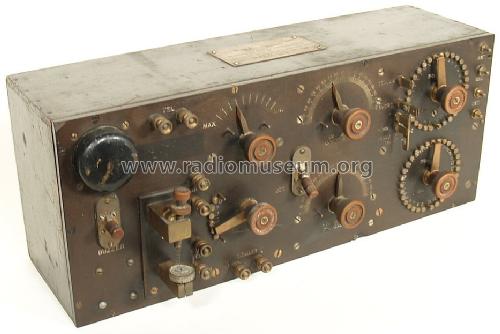- Country
- United States of America (USA)
- Manufacturer / Brand
- National Electric Signaling Co. (NESCO) or Supply; Washington, D.C.
- Year
- 1917
- Category
- Detector-Radio (Crystal or diode, without tubes/transistors)
- Radiomuseum.org ID
- 184424
-
- alternative name: National Electric Signaling Co. || National Electrical Supply Co.
- Main principle
- Crystal or Solid State Detector
- Wave bands
- Broadcast (MW) and Long Wave.
- Power type and voltage
- No Power needed
- Loudspeaker
- - For headphones or amp.
- Material
- Wooden case
- from Radiomuseum.org
- Model: CN-113 - National Electric Signaling Co
- Shape
- Tablemodel, Box - most often with Lid (NOT slant panel).
- Dimensions (WHD)
- 17 x 7 x 6 inch / 432 x 178 x 152 mm
- Notes
-
This CN-113 Crystal Receiver covered a frequency range of about 33 kHz to 1 mHz, and it included a built-in crystal detector. Binding post connections were provided to allow it to be used with an external vacuum tube detector in a regenerative circuit or an alternate crystal detector. The switch in the center determined whether the crystal detector (the "DET" position) or the vacuum tube ("AUD" position) would be used. At the time, tubes were still generally called "Audions", the name given them by Lee DeForest, who invented the triode.
- Author
- Model page created by Alan Scott Douglas † 16.11.15. See "Data change" for further contributors.
- Other Models
-
Here you find 31 models, 29 with images and 2 with schematics for wireless sets etc. In French: TSF for Télégraphie sans fil.
All listed radios etc. from National Electric Signaling Co. (NESCO) or Supply; Washington, D.C.
Collections
The model CN-113 is part of the collections of the following members.












